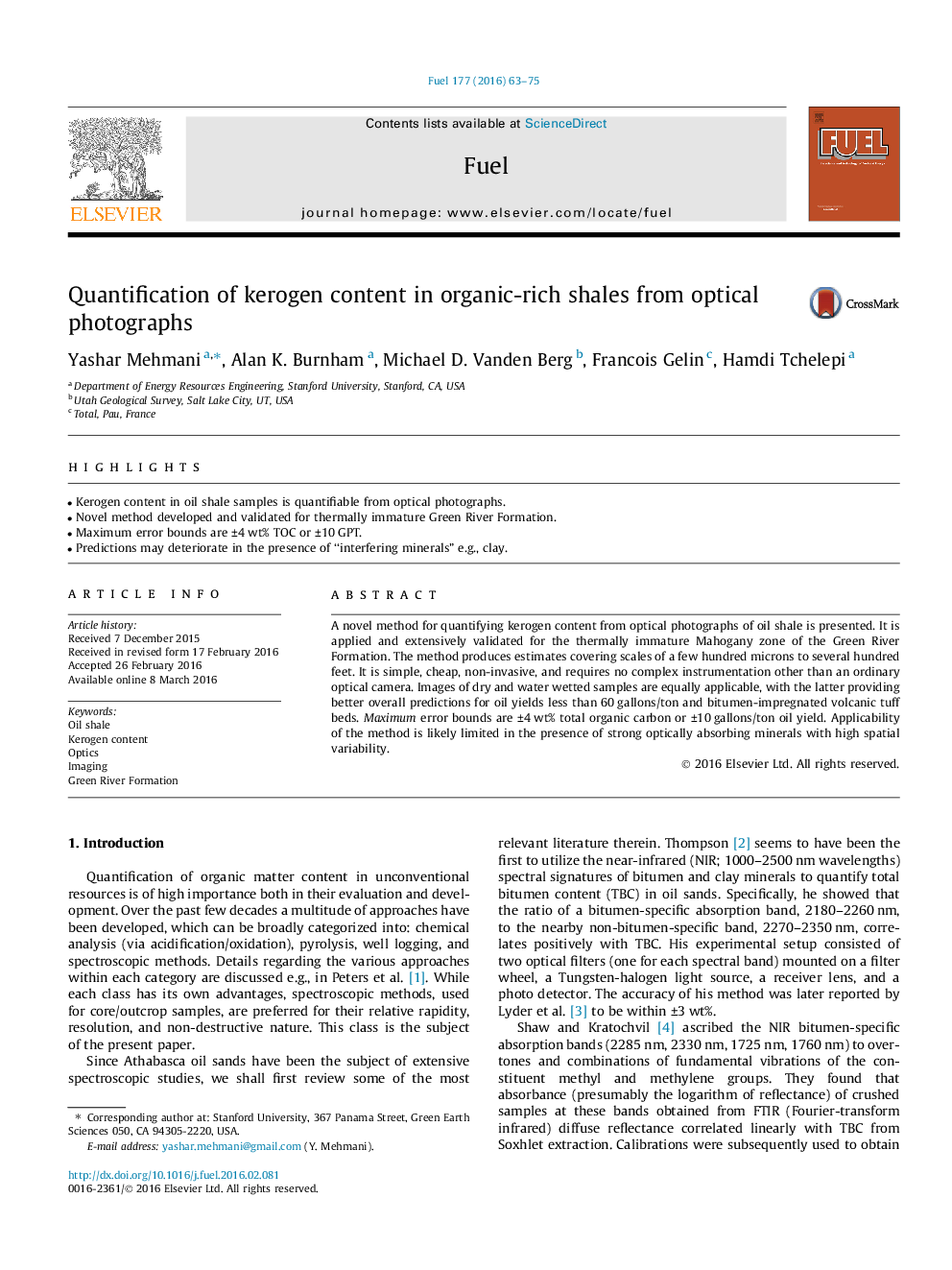| Article ID | Journal | Published Year | Pages | File Type |
|---|---|---|---|---|
| 205118 | Fuel | 2016 | 13 Pages |
•Kerogen content in oil shale samples is quantifiable from optical photographs.•Novel method developed and validated for thermally immature Green River Formation.•Maximum error bounds are ±4 wt% TOC or ±10 GPT.•Predictions may deteriorate in the presence of “interfering minerals” e.g., clay.
A novel method for quantifying kerogen content from optical photographs of oil shale is presented. It is applied and extensively validated for the thermally immature Mahogany zone of the Green River Formation. The method produces estimates covering scales of a few hundred microns to several hundred feet. It is simple, cheap, non-invasive, and requires no complex instrumentation other than an ordinary optical camera. Images of dry and water wetted samples are equally applicable, with the latter providing better overall predictions for oil yields less than 60 gallons/ton and bitumen-impregnated volcanic tuff beds. Maximum error bounds are ±4 wt% total organic carbon or ±10 gallons/ton oil yield. Applicability of the method is likely limited in the presence of strong optically absorbing minerals with high spatial variability.
